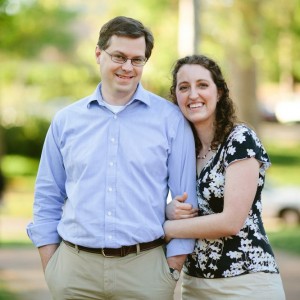Whenever there is a group of people who intend to work together, whether a couple through marriage, friends planning an outing, citizens guiding a country, or employees running a company, decisions need to be made. Inevitably there are agreements, disagreements, and compromises. There are thousands of methods by which decisions can be reached, but the way in which a decision is reached and the motivations of the decision makers can indicate much about the health of the partnership.
The cynical question “who wears the pants in the family?” is often used to imply that there is one person in a marriage who is in charge. (We will ignore for this discussion the mysoginistic nature of the question.)
The same question can be applied to a company. When there is a conflict, large or small, between parties in the company, who wins? In examining this problem, I divide a company into two main areas: primary functions and support functions. Primary functions provide the stated, outward product or service the company offers while secondary functions are required to run a business but are not specific to any particular business sector. For example, at an automobile company, the engineering department or assembly department would be primary functions while the human resources or accounting would be support functions.
I have observed that as a company grows in size, the balance of power shifts from the primary functions to the secondary functions. In a small company, the majority of the employees are focused on the primary functions and the support functions are usually very small (often woefully small). This results in a very strong alignment between the public goal of the company and the majority of the employees of a company.
What happens as a company grows? The support functions must grow to answer the needs of a larger organization. No longer can one person handle all the accounting and human resources duties by themselves. Departments must be created and staffed.
This poses a huge risk. As with all organisms (and yes, a company is an organism made up of people, just like you and I are made up of cells), organisms desire one thing above all else; survival. The larger the organization, the larger this survival instinct becomes. And a desire to survive often leads to a high degree of risk-aversion.
Avoiding risk is a dangerous thing depending on how the organization responds. Sadly, the common way to avoid risk goes something like this:
- A problem occurs (i.e. bug in software, lawsuit, etc.)
- A process or procedure is created that would have caught that particular problem
- That process is rolled out for everyone to implement
The problem with that methodology is that each process that is created takes time away from the core mission of a company. As an example, let us assume that FooBar Inc. makes widgets. Each widget takes 10 hours to complete, but 1% of the time a widget jams in the machines and causes 20 hours of downtime. This sounds horrible! So FooBar Inc. implements a new process that changes the manufacturing process by introducing a QA step on every widget. Sounds like a great idea. However, it adds 1 hour to each widget manufacture.
- Old System: 100 widgets takes 1000 hours + 20 hours of downtime
- New System: 100 widgets takes 1100 hours
So, in this scenario, a seemingly good idea (extra QA) actually makes the situation worse for making widgets. And this type of decision is made every single day in companies. A singular bad thing happened resulting in a policy that is applied to all scenarios. By not accepting that some risk is unavoidable or that the cost of avoiding some risks is greater than the risk themselves, companies fall into a spiral of creating more and more time consuming processes which eventually stifle their ability to achieve their stated goals.
At some point in the life of most every company there comes a tipping point. A point where the support organizations that oversee these policies and procedures take over. It is hard to see, but can be answered by our original question.
Who wears the pants in your company? When there is a conflict between a support function and a primary function and it is presented to your senior leadership, which way do they decide?
A lot can be judged by that decision.




